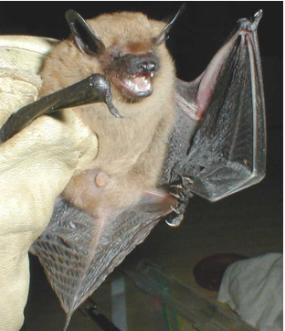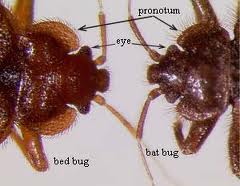Bats Are Not Your Average Pest Control Problem
Bats are not your average pest control problem. There are no “quick-fix” traps or chemicals that work. Bats may start out as a simple nuisance. However, each year the size of the colony grows. Increased numbers of bats bring increased odors, encounters, bat mites, risk, and property damage. This is one of those problems that will not just go away!
- Carry diseases like rabies and Histoplasmosis
- Cause property damage
- Carry bat mites that can and do bit you and your family
- Increase in number with each passing season
- Leave droppings (guano) that can spread disease-even after they’re gone
Histoplasmosis and Bats
Histoplasmosis is an airborne disease caused by the microscopic spores of soil fungus, Histoplasma capsulatum, which affects the lungs of humans. It can masquerade as influenza, or with more severe symptoms, be misdiagnosed as tuberculosis. Many infections in humans do not produce symptoms or cause distress. Skin and blood tests reveal the presence of an infection; however, a positive histoplasmin reaction may only be evidence of a previous exposure. When soil containing the fungus is disturbed, the spores, and possibly hyphal fragments, become airborne and may be inhaled by people who enter bat roosts.
 Guano, Urine, Odor, and Ectoparasites
Guano, Urine, Odor, and Ectoparasites
Bat guano and urine accumulating in attics and wall spaces can attract arthropods such as roaches as well as other pests. The accompanying odor from a large bat roost can be pungent but not dangerous. Bat ectoparasites, such as ticks, mites, fleas, and bugs, rarely parasitize humans. They are most likely to cause a nuisance after a house has been bat-proofed, thereby ridding the home of bats, but leaving the parasites. Parasite problems are unlikely except in very large, well-established bat colonies where fumigation may be appropriate. Ectoparasites quickly die without their bat hosts.
The most common reasons a Minnesota Homeowner will seek a Professional:
- Bat Mites (usually mistaken for bed bugs at first)
- Selling home (can’t be sold with an existing bat infestation)
- Colony has grown so large the noise and smell have become unbearable
- Birth of child
- Someone has developed allergies due to compromised immune system
- Have tried and failed to eliminate the bat problem on your own
If you are uncomfortable entering the attic when bats may be present, you can inspect the attic at night for bat droppings. The dry, black droppings are about the size of a grain of rice, and accumulate in piles below areas where the bats roost. (Mouse droppings look similar, but you would find them scattered in small amounts throughout the attic.) If you find bats living in your attic during the day, or if you find large accumulations of bat droppings, then you probably have a maternity colony in your house.
If you have recurring problems with bats entering your home, you may want to inspect your attic to determine if you are housing a bat maternity colony. Extreme care should be taken when attempting to catch a bat(s) if your home is currently under attack by bats it is wise to call a professional. A Minnesota Wild Animal Management had experience in handling bat removals. Hiring a professional will guarantee the safety of you and your family along with preventing these bats from returning.






